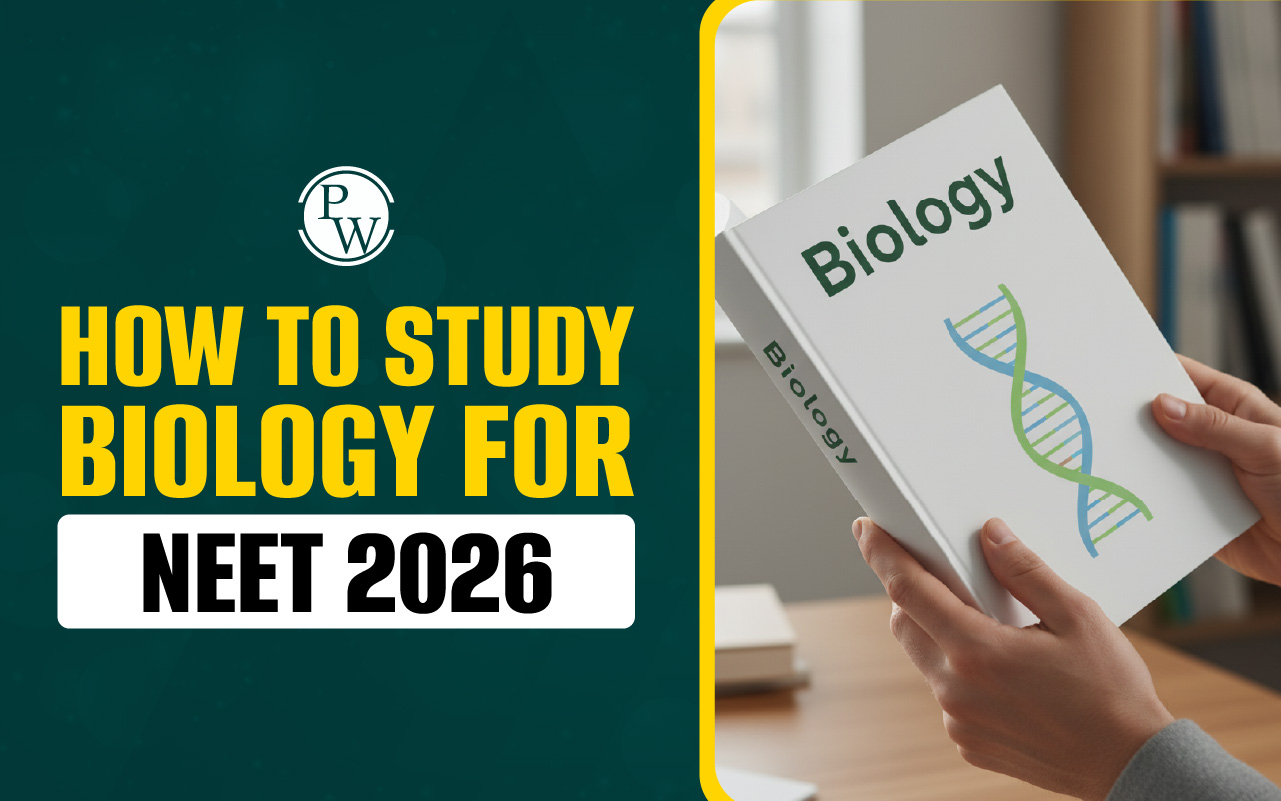
Respiration In Plants MCQs: Respiration in Plants is an important chapter from the Biology syllabus. This chapter helps us understand how plants break down food and get energy. Solving MCQs also improves speed and accuracy, which is very important in the NEET Exam.
If you want to understand this chapter better, you can read NEET notes on Respiration in Plants. Along with this, try solving previous year questions. This helps you know what kind of questions come in the exam.
Respiration In Plants MCQs Overview
Every year, 1–2 questions come from the Respiration in Plants chapter in the exam because it has 4% weightage in the NEET exam. This chapter explains how plants make energy by breaking down food in steps like glycolysis, link reaction, Krebs’ cycle, and electron transport system (ETS).
Download Last 5 Years NEET Previous Year Question Papers PDF
Free NEET PYQ PDF
What is Respiration In Plants?
Respiration in plants means breaking down food (usually glucose) to get energy. This energy is used for growth, repair, and other plant activities. The food is broken down in different steps. First step is glycolysis, then comes the link reaction, followed by Krebs’ cycle, and finally the Electron Transport System (ETS). Plants can do this with or without oxygen. When oxygen is used, it is called aerobic respiration. When no oxygen is present, it is anaerobic respiration or fermentation.
| NEET Exam Important Links | |
|---|---|
| NEET Syllabus | NEET Biology Notes |
| NEET Eligibility Criteria | NEET Exam Pattern |
| NEET Previous Year Question Papers | NEET Biology Syllabus |
Respiration In Plants MCQs with Explanations
Below are NEET-level multiple choice questions with correct answers and simple explanations.
Q1. Pyruvate →C_2 H_5 OH+CO_2
The above reaction needs two enzymes named as:
-
pyruvate decarboxylase and alcohol dehydrogenase.
-
pyruvate decarboxylase and invertase.
-
lactate decarboxylase and pyruvate kinase.
-
pyruvate decarboxylase and hexokinase.
Answer: (A)
Explanation: Alcoholic fermentation uses two enzymes – pyruvate decarboxylase and alcohol dehydrogenase.
Q2. How many ATPs from substrate level phosphorylation are produced from Glucose-6phosphate via glycolysis?
-
Three
-
Four
-
One
-
Two
Answer: (B)
Explanation: Substrate level phosphorylation in glycolysis produces 4 ATPs (gross). Net gain is 2 ATPs, but total formed is 4.
Q3. In anaerobic respiration the correct sequence of catabolism of glucose is:
-
Glycolysis → TCA cycle → oxidative phosphorylation
-
Glycolysis → fermentation
-
Glycolysis → oxidative phosphorylation → TCA cycle
-
Oxidative phosphorylation → TCA cycle → glycolysis
Answer: (B)
Explanation: In anaerobic respiration, glycolysis is followed by fermentation, not TCA cycle or oxidative phosphorylation.
Q4. Which of the following step is called gateway step/link reaction/transition reaction in respiration?
-
Glycolysis
-
Formation of acetyl Co-A
-
Citric acid formation
-
ETS terminal oxidation
Answer: (B)
Explanation: Link reaction converts pyruvate into acetyl Co-A. It connects glycolysis to Krebs’ cycle.
Q5. All living organisms retain the enzymatic machinery to partially oxidise glucose without the help of oxygen. This breakdown is through:
-
Krebs' cycle.
-
EMP pathway.
-
Electron transport system.
-
Tricarboxylic acid cycle.
Answer: (B)
Explanation: EMP pathway is another name for glycolysis. It works in all living cells and does not need oxygen.
Q6. Which of the metabolite is common to respiration mediated breakdown of fats, carbohydrates and proteins?
-
Glucose-6-phosphate
-
Fructose1, 6-bisphosphate
-
Pyruvic acid
-
Acetyl Co-A
Answer: (D)
Explanation: Acetyl Co-A is a common product from all types of food – fats, carbs, and proteins. It enters the Krebs’ cycle.
Q7. Glycolysis takes place in:
-
all living cells.
-
eukaryotic cells only.
-
prokaryotic cells only.
-
plant cell mainly.
Answer: (A)
Explanation: Glycolysis takes place in the cytoplasm of all cells – both prokaryotic and eukaryotic.
Q8. Oxidation of one molecule of NADH gives rise to:
-
3 ATP molecules.
-
12 ATP molecules.
-
2 ATP molecules.
-
1 ATP molecule.
Answer: (A)
Explanation: Each NADH gives 3 ATPs during electron transport system.
Q9. Glycolysis:
-
takes place in the mitochondria.
-
produces no ATP.
-
has no connection with electron transport chain.
-
reduce two molecules of for every glucose molecule processed.
Answer: (D)
Explanation: Two NAD⁺ molecules are reduced to NADH in glycolysis for every glucose molecule.
Q10. Incomplete breakdown of glucose in anaerobic respiration form organic compounds like:
-
glucose and carbon dioxide.
-
ethanol and carbon dioxide.
-
water and carbon dioxide.
-
fructose and water.
Answer: (B)
Explanation: In anaerobic respiration (alcoholic fermentation), glucose is converted into ethanol and CO₂.
Q11. Which of the following event occurs between glycolysis and Krebs' cycle?
-
Pyruvic acid converted into carbon dioxide and acetyl CoA
-
ADP is converted into ATP
-
Glucose is converted into Co2
-
Pyruvic acid is converted into carbon dioxide and NAD
Answer: (A)
Explanation: Before entering the Krebs’ cycle, pyruvate is converted into acetyl Co-A and CO₂ is released.
Q12. If an inhibitor inhibits the activity of enzyme pyruvate dehydrogenase then how many net ATP will be produced on oxidation of 1 molecule of glucose (including oxidative phosphorylation)?
-
8 ATP
-
2 ATP
-
4 ATP
-
12 ATP
Answer: (A)
Explanation: Without pyruvate dehydrogenase, only glycolysis works. It produces 2 ATP and 2 NADH = around 8 ATP in total.
Q13. Respiration is:
-
breaking of a type of bonds like ionic or nonionic of complex compounds through oxidation within the cell by utilizing bulk of energy.
-
breaking of C-C bonds of simple molecules through hydrolysis within the cell by releasing energy.
-
breaking of C-C bonds of complex molecules through oxidation within the cell to release a considerable amount of energy.
-
breaking of C-C bonds of complex molecules through hydrolysis within the cell by releasing energy.
Answer: (C)
Explanation: In respiration, C–C bonds of complex molecules are broken through oxidation, releasing energy.
Q14. How many molecules of ATP are produced per molecule of FADH₂ oxidized?
-
One
-
Two
-
Three
-
Four
Answer: (B)
Explanation: One FADH₂ gives 2 ATPs in the electron transport system.
Q15. In anaerobic respiration, incomplete oxidation of glucose occurs. How many ATP produced if 2 molecules of glucose is oxidised in lactic acid fermentation?
-
4
-
8
-
2
-
zero
Answer: (A)
Explanation: Each glucose gives 2 ATP in lactic acid fermentation. So, 2 glucose give 4 ATPs in total.
Prepare for NEET with PW Online NEET Coaching! Our courses offer structured lessons, clear explanations of concepts, and interactive classes to support your NEET preparation effectively.
Respiration in Plants MCQs FAQs
What is the respiration system of a plant?
What is the process of respiration?
What are the two main types of respiration?
What is the formula for respiration?










